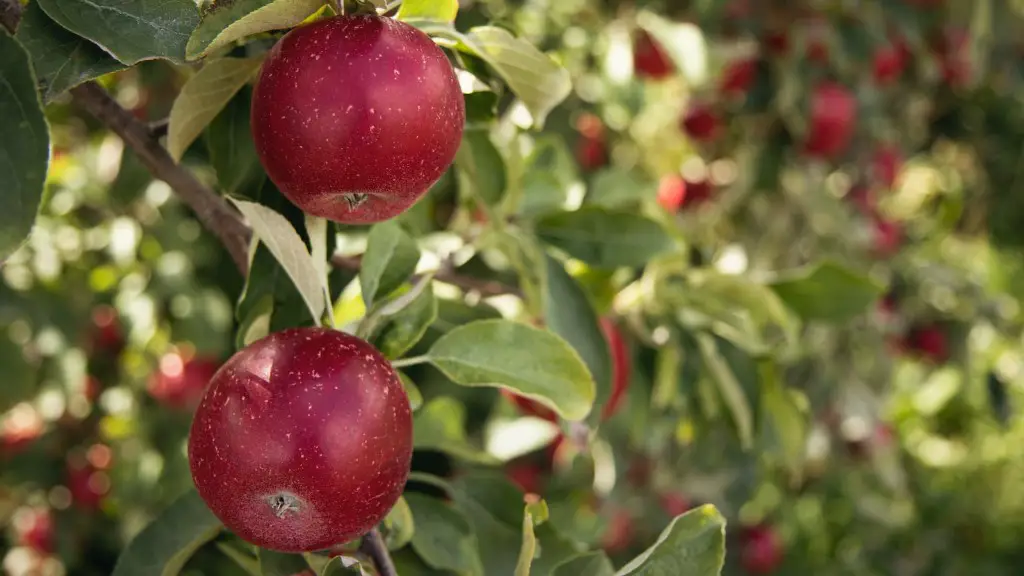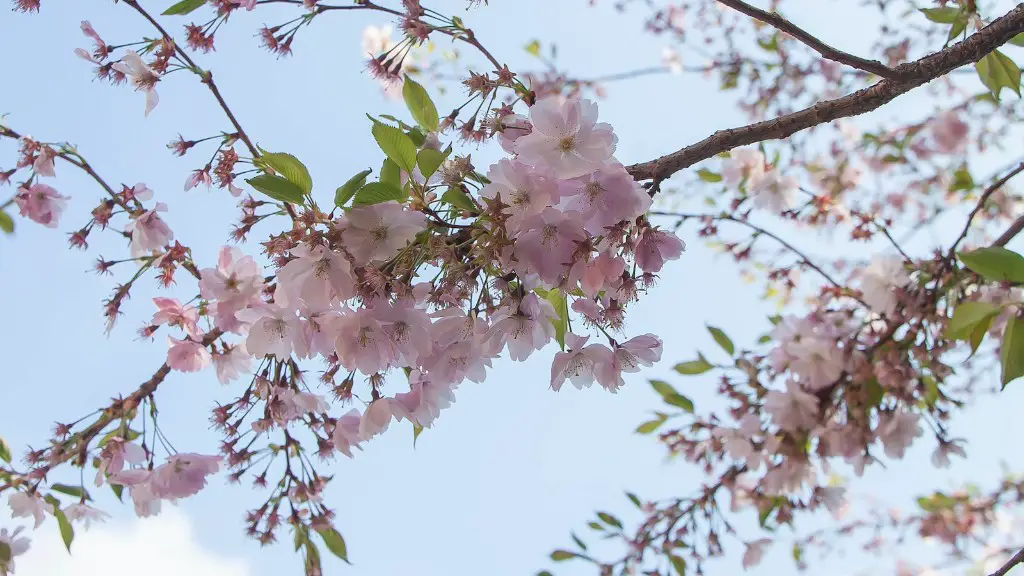Autumn is the best time to pick apples from a tree. In the Autumn season, apples are ripe and sweet and typically ready for harvest from mid-September through October. It is important to pick apples from trees only when they are ripe. If a person tries to pick an apple too early or too late, the apple will be either tart or mushy, respectively. Knowing when to pick freshly-ripened apples is not only important for optimum flavor, but for efficient harvest, too.
The best way to tell when an apple is ready for picking is to inspect the color of the app-le’s skin. As apples ripen, they will change colors. Some apple varieties will transition from green to red, while others transition yellow to yellow-red. A ripe apple should feel firm in the palm, not too mushy, but still vibrant with color. If the apple is still green, it needs more time to ripen.
During harvesting, it is important to ensure apples are picked cleanly from the tree without any bruises. To harvest without bruising, one should hold the apple lightly between the thumb and forefinger, and turn the fruit gently, but firmly to the side. As the stem loosens, the apple should be pulled away from the branch, gathering the stem with the hand. Apples should be harvested in cool temperatures and stored quickly, to avoid rotting
When picking apples from trees, it is also important to be aware of the apple varieties that one is harvesting from. Some apple varieties are sweeter than others, and some varieties are better for baking, or for eating raw. Knowing the varieties of the apples is necessary for the proper use of the crop. For example sweet apples are better for baking and tart apples are better for eating raw.
It should also be noted that apples ripen differently based on the climate. Apples grown in warmer climates have an earlier harvest window than those grown in cooler climates. Generally speaking, when the leaves begin to turn to their autumnal hues, it is an indication that the apples are ripe and ready to harvest.
The Factors that Influence Apple Ripening
The ripening of apples is affected by several environmental factors, including temperature, light, humidity, and air circulation. Apples that are exposed to more sunlight will ripen quicker than those that are not. Higher temperatures can also contribute to quicker ripening, but there is an upper limit. Once temperatures exceed 86 degrees Fahrenheit, the ripening process is interrupted and the apples can become over-ripe.
Humidity can also influence how quickly an apple ripens. Urlihgs of 80 percent or higher can slow the ripening process, while the opposite is true for an environment with 50 percent or less humidity. Checking the air circulation around the tree is also important, as stagnant air and too much humidity can cause apples to mold or rot before they are ready for harvest.
The Benefits of Picking Apples at the Peak of Ripeness
It is important to pick apples at their peak of ripeness because it makes for a sweeter, more flavorful apple. Ripe apples are more easily prepared into pies, applesauce, or other desserts than unripe apples. Apples at their peak also keep better than apples picked when under-ripe.
Picking apples at the peak of ripeness also ensures that one gets the most out of their apple season. Getting the timing and ripeness right will extend the life of the harvest, providing crisp and sweet apples for much longer. In addition, freshly-picked apples at their peak will offer the best nutrients, and may offer more health benefits than those that have been sitting around too long.
When it comes to choosing the right apples, taste and smell always come first. The sugars present in ripe apples, and the overall flavor, can be far superior to unripe apples. Taking the time to inspect the apple’s skin and using the senses of sight, smell, and touch can ensure that the tree’s bounty is harvested only when optimal.
Careful packing and storage of apples
Once apples are properly picked from the tree, it is important to take proper care of them for future use. Apples should be stored at temperatures between 30-32 ℉. Storing apples in slightly warmer temperatures could lead them to spoil prematurely. When packing apples, one should use soft materials like straw, paper, or cloth that can cushion the apple and protect it from bruising.
When packing, be sure to keep apples separated as to not let them rub against one another, as this will cause bruises and deterioration. Solid containers such as cartons and boxes are better suited for storage, but should have some ventilation holes punched in them to allow air flow and to discourage mold.
Apples stored in plastic bags should be prevented from condensation, as the moisture will speed up the decay process. Apples can be stored up to six months by using proper cooling, packing, and storing methods; however, if stored at warmer temperatures, apples should be consumed within two weeks.
Methods to use under-ripe apples
Should a person accidentally pick apples before they are ripe, there are some methods to soften un-ripe apples. Placing apple slices in a slightly acidic sugar syrup is a good way to make sure they are softened quickly. Other methods include throwing the apples in a bag with a banana and letting them sit for a few days, or cutting the apples in half and baking them in the oven for about 10 minutes.
When it comes to under-ripe apples, the same methods of preparing them for eating or baking apply. The apples can still be used in pies or applesauce, they will just need a little extra sugar and cooking time. Cutting the apples into thinner slices and using longer cooking times can also help reduce the tartness.
Unripe apples can also be used to create delicious jams and jellies. The added sugar and pectin in the jam can help soften the tartness of the apples. Apples can also be used to create delicious syrups, which can be used to top ice cream, pancakes, or French toast. Although they may not be suitable for eating out of hand, unripe apples can still be put to good use in the kitchen.
Planning an apple harvest
When planning to pick apples off a tree, there are a few important factors to keep in mind. All varieties of apples will ripen in different seasons, and some may need to be picked sooner than others. Knowing the climates in which each variety of apple grows will help one pick ripe apples at the most optimal times.
It is also important to consider how the harvested apples will be used. Sweet apples are better for baking and tart apples are better for eating raw. Knowing the proper use of the crop can make all the difference when picking and harvesting apples.
When it comes to apples, their ripeness can be influenced by several environmental factors. Temperature, light, humidity and ventilation all play a role in determining the harvest window of apples. It is important to harvest apples once they reach their peak of ripeness, as they will make for a sweeter and more flavorful product.
It is also important to take care when harvesting apples, whether ripe or unripe, as they can easily bruise or rot prematurely when not properly stored. Proper storage and packing methods should be followed to ensure the lasting quality of apples once picked off the tree.




